What is the biggest animal in the world? It is worth noting that the largest living animals in the world today aren’t land animals, because on land they must struggle against the forces of gravity to survive, effectively limiting their size. The creatures of the oceans can grow much larger, because the buoyancy of the water offers relief from gravity’s effects, allowing them the freedom to grow to gigantic proportions. The largest animal ever lives in the sea. All species have the largest member.
The list below discusses each of the largest animals in the world:
The Largest Animal in the World is: Blue Whale (Balaenoptera musculus)
The biggest animal in the world is the adult blue whale. These animals are bigger than any dinosaur that’s ever lived, and they are far bigger than the largest living land animal on the planet today. Blue whales can grow up to 105 feet long (32 m). That’s more than twice as long as a semi-trailer rolling along the highway. An adult blue whale weighs as much as 15 school buses. Read more about this massive creature on the blue whale encyclopedia page.
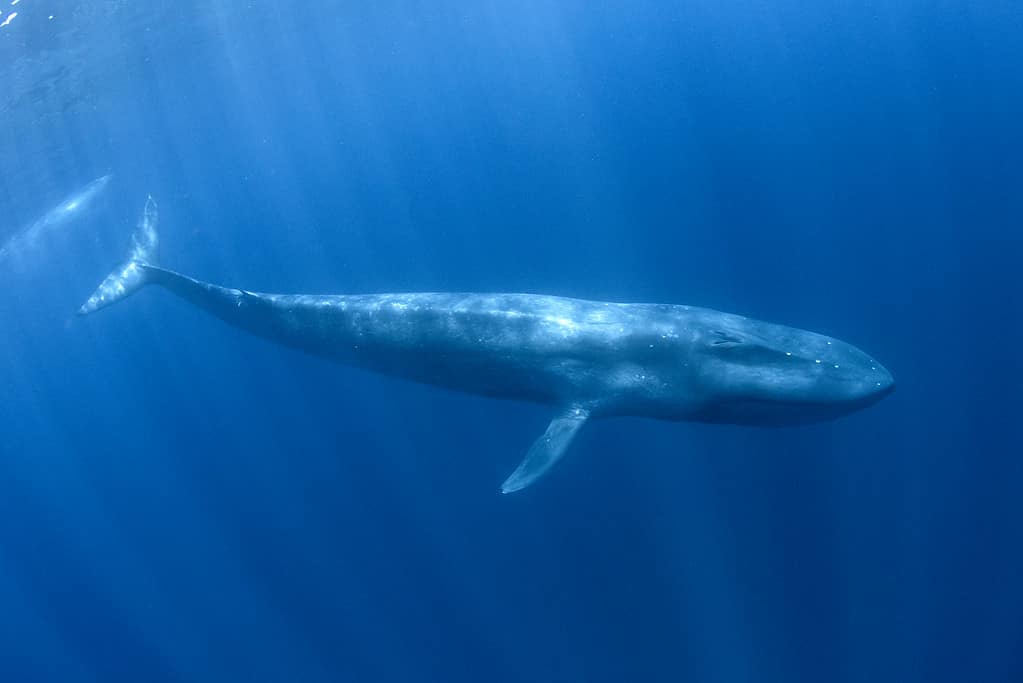
Blue whales are bigger than any dinosaur that’s ever lived and are far bigger than the largest living land animal on the planet today.
©Rich Carey/Shutterstock.com
The Largest Bird: Ostrich (Struthio camelus)
We’ve answered the question, “what is the biggest animal in the world?”. Now it’s time to take a look at the largest creature of the feathered variety.
The largest bird on Earth is the ostrich. Too big and heavy to fly, this bird is capable of running at speeds of up to 43 MPH (70 km/h) over long distances. Males can be over 9 feet tall (2.8 m) and weigh up to 346 pounds (156.8 kg), as much as two people. Females are usually smaller and rarely grow over 6 foot 7 inches (2 m) in height. Learn about ostriches here.
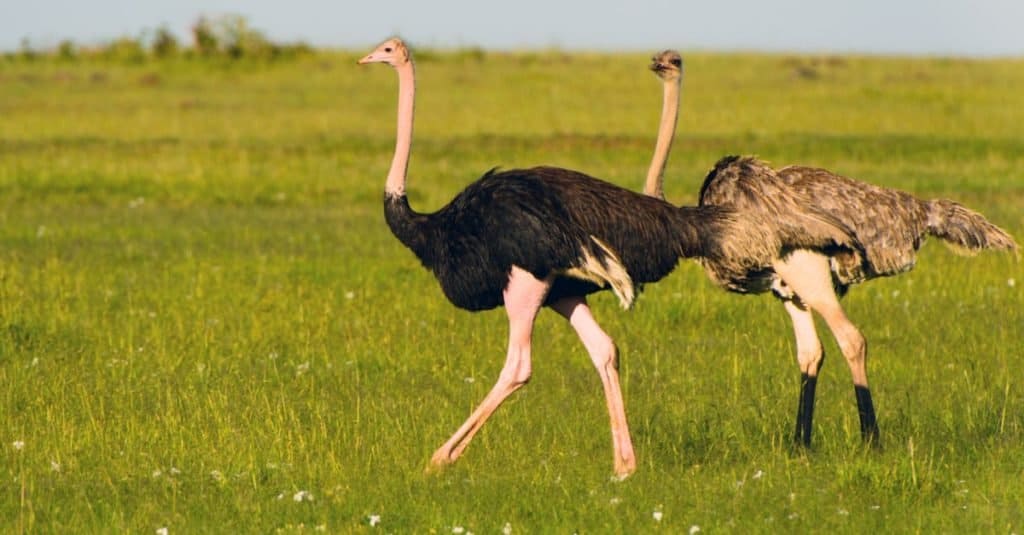
Male ostriches can grow to over 9 feet tall and weigh up to 346 pounds. Females are generally smaller and rarely grow over 6 foot 7 inches in height.
©Cristian Zamfir/Shutterstock.com
The Largest Reptile: Saltwater Crocodile (Crocodylus porosus)
The largest reptile in the world is the saltwater crocodile, with males reaching lengths of as much as 20 feet (6.1 m) and weighing in at 2,370 pounds (1075 kg), or about twice the weight of a grizzly bear. Females are far smaller and rarely grow over 9.8 feet long (3 m).
Known by many names including the estuarine crocodile, the marine crocodile, and the sea crocodile, this predator is capable of defeating other apex predators including sharks and even tigers. A powerful swimmer, the reptile has been spotted braving the waves far from the shore. It is relatively long-lived and has a lifespan of 70 years.
The largest animal in the world (reptile) is the saltwater crocodile.
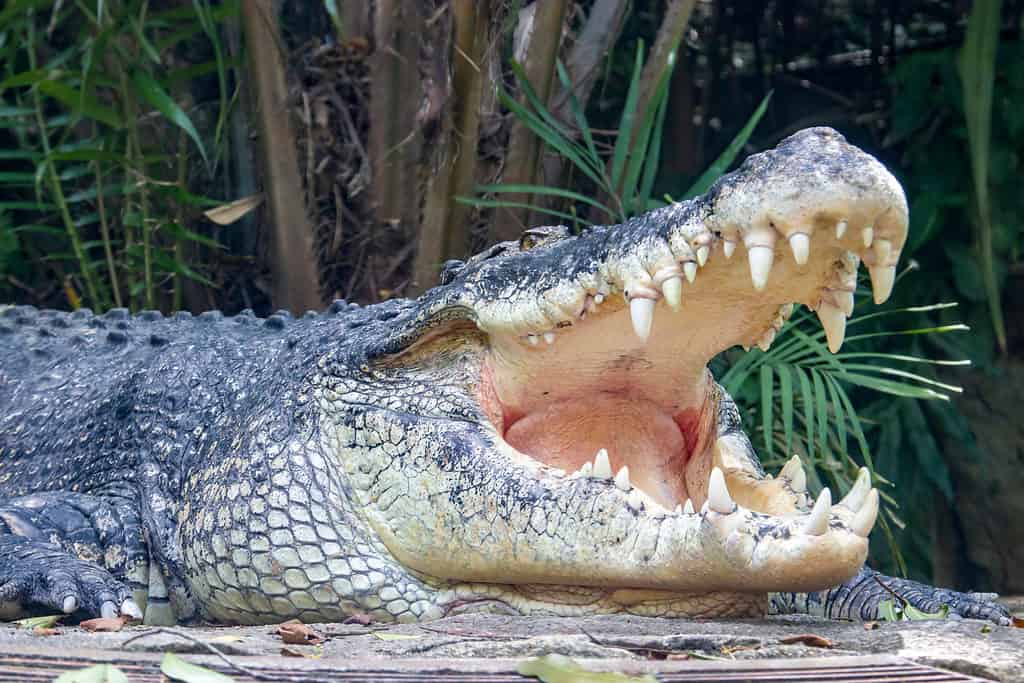
An adult male saltwater crocodile can weigh up to 2,370 pounds.
©Danny Ye/Shutterstock.com
The Largest Animal in the World is: Blue Whale (Balaenoptera musculus)
The adult blue whale is bigger than three prehistoric triceratopses and holds the record as the largest mammal on Earth. Other species of whales come somewhat close to it in size. The largest living land animal, however, is the African elephant (Loxodonta Africana). The biggest animal in the world – terrestrially speaking – typically stands 10 to 13 feet tall (3 to 4 meters) and can weigh as much as 9 tons (8,000 kg). Read more about this massive animal on the blue whale encyclopedia page.
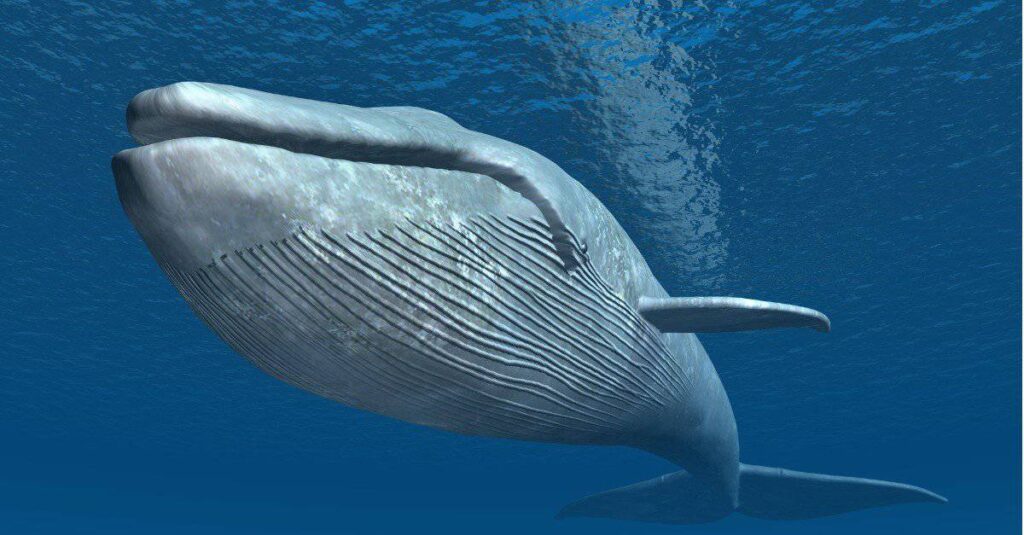
An adult blue whale is larger than three prehistoric triceratopses.
©iStock.com/MR1805
The Largest Amphibian: Chinese giant salamander (Andrias davidianus)
The Chinese giant salamander lives its entire life underwater, yet has no gills. Instead, it absorbs oxygen through its skin. This odd-looking creature gets quite large, up to 5 feet 9 inches (180 cm) and weighs in at 110 pounds (70 kg), about the size of many adult humans. At breeding time the females lay up to 500 eggs and the males act as caretakers until the young hatch. Read more about salamanders here.
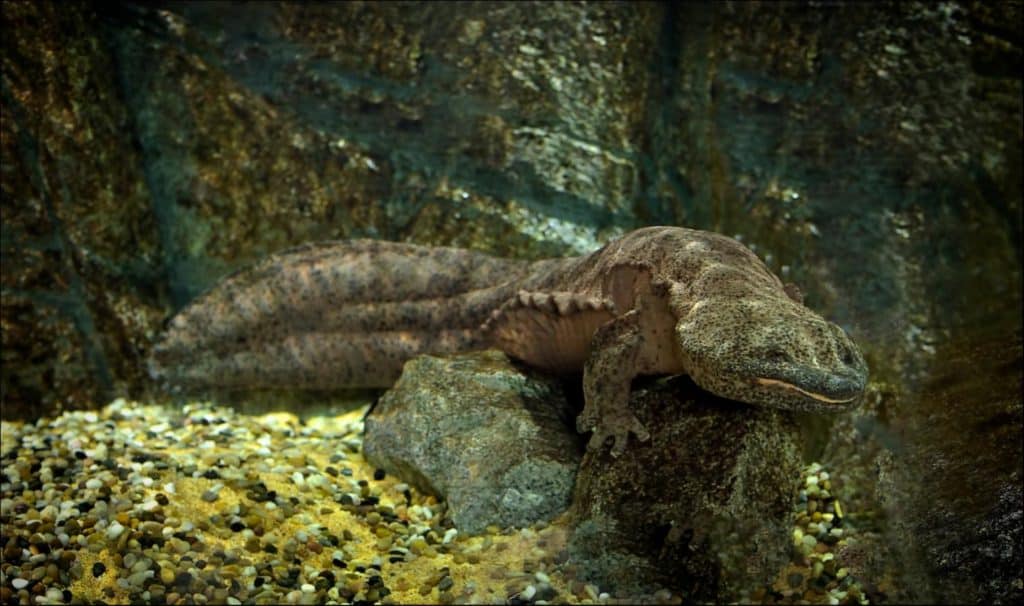
The Chinese giant salamander can grow up to 5 feet 9 inches and weigh 110 pounds, about the size of many adult humans.
©tristan tan/Shutterstock.com
The Largest Rodent: Capybara (Hydrochoerus hydrochaeris)
The capybara looks a lot like a giant guinea pig, but instead of fitting into your hand this huge rodent stands 2 feet tall (0.61 m) at the shoulders and is an impressive 4.6 feet (1.4 m) long.
Twice as big as an adult beaver, the capybara can weigh up to 143 pounds (65 kg). They live in herds of up to about 40 animals, and males and females are roughly the same sizes. Learn more capybara facts here.
These big animals resemble and act like other rodents. They are also great swimmers and are even capable of taking a nap in the water! They’re really agile in the water as well as on land. They have unique vocal sounds and get along well with other animals. These friendly vegetarians eat mostly grass and other plants much like cows.
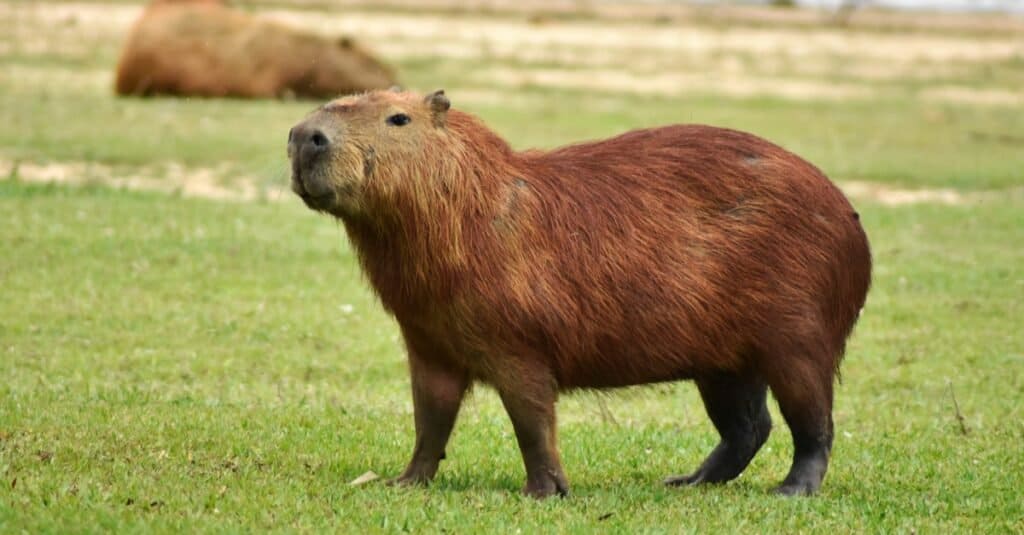
Adult male and female capybaras are roughly the same sizes.
©Horus2017/Shutterstock.com
The Largest Snake: Giant Anaconda (Eunectes murinus)
In terms of mass, the largest snake in the world is the giant anaconda. This huge animal has been known to weigh as much as 550 pounds (250 kg), and some of these big animals have been measured up to 30 feet (9.1 m) long. That’s longer than a London double-decker bus. They can be up to 3 feet around the middle, giving them plenty of room to swallow all kinds of prey, including mammals as large as deer, fish, alligators, birds, and anything else they can catch.
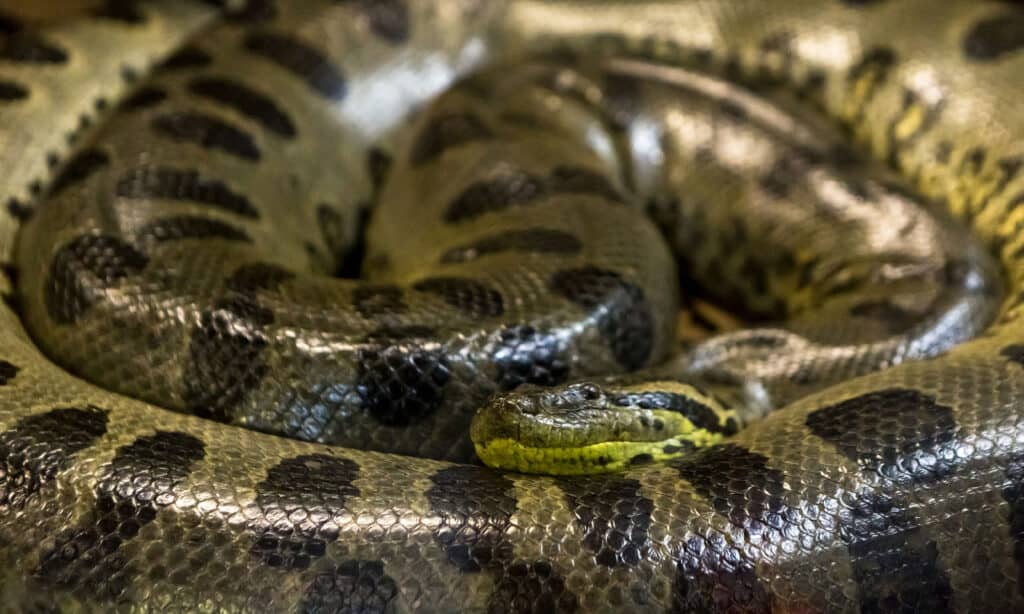
Giant anacondas can measure up to 3 feet around the middle, giving them plenty of room to swallow large prey including deer, fish,
alligators
, birds, and anything else they can catch.
©iStock.com/MaRabelo
The Largest Lizard: Komodo Dragon (Varanus komodoensis)
The largest lizard on Earth is the Komodo dragon. This dangerous animal grows up to 10 feet (3 m) long and typically weighs about 200 pounds (91 kg). The females tend to be smaller than the males and usually get no longer than 6 feet (1.8 m) long, about the same size as an average man. These lizards hunt large prey such as water buffalo, pigs, and deer, and have even been known to hunt people. Learn where to find komodo dragons here.
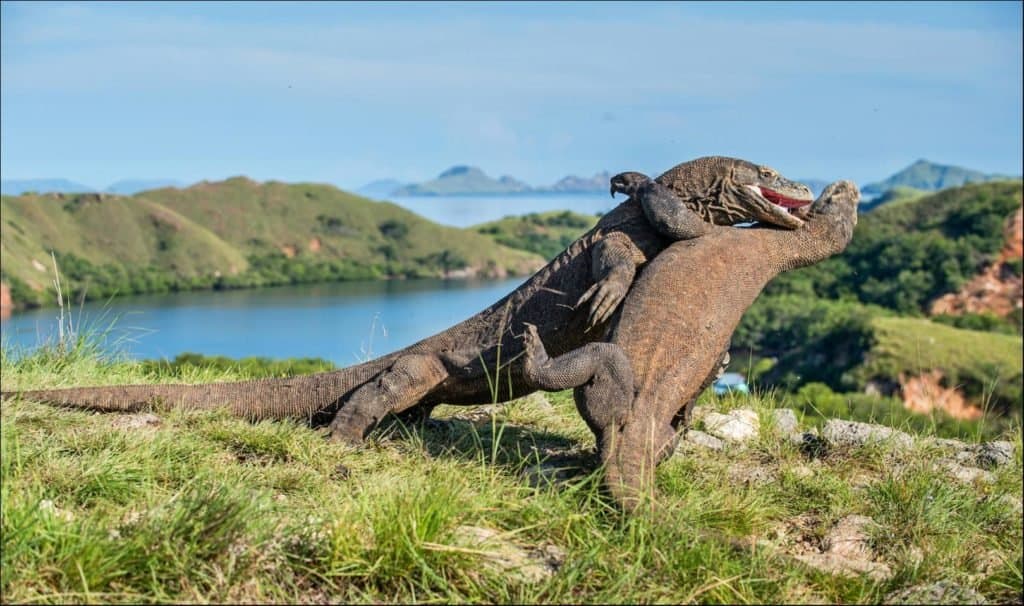
Komodo dragons hunt large prey such as water buffalo, pigs, and
deer
, and have even been known to hunt people.
©Sergey Uryadnikov/Shutterstock.com
The Largest Arthropod: Japanese Spider Crab (Macrocheira kaempferi)
The arthropod family includes lobsters and crabs, spiders, scorpions, insects, and other creatures having jointed exoskeletons. The largest arthropod on record is the Japanese spider crab. One was caught in 1921 that measured a record-breaking 12 feet (3.8 m) across and weighed 42 pounds (19 kg). That’s almost the same length as a Volkswagen Beetle car. See more crab information here.
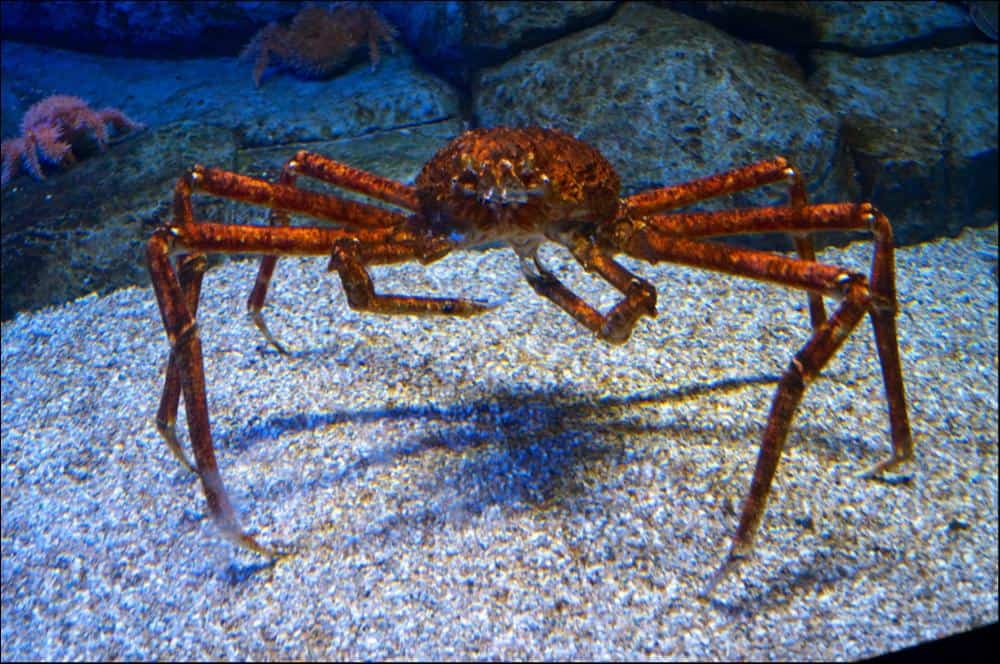
Crab (Brachyura)
©StuVidiot/Shutterstock.com
The Largest Insect: Titan Beetle (Titanus giganteus)
Titan beetles are sometimes mistaken for a form of a cockroach, but these huge South American insects are a separate species. They grow up to 6.5 inches (16.7 cm) long and weigh 3.5 ounces (100 grams). They have strong mandibles that can snap a pencil and sharp claws they use for defensive purposes. Nobody knows what their larvae look like, as these have never been seen. Learn how many species of beetles exist here.
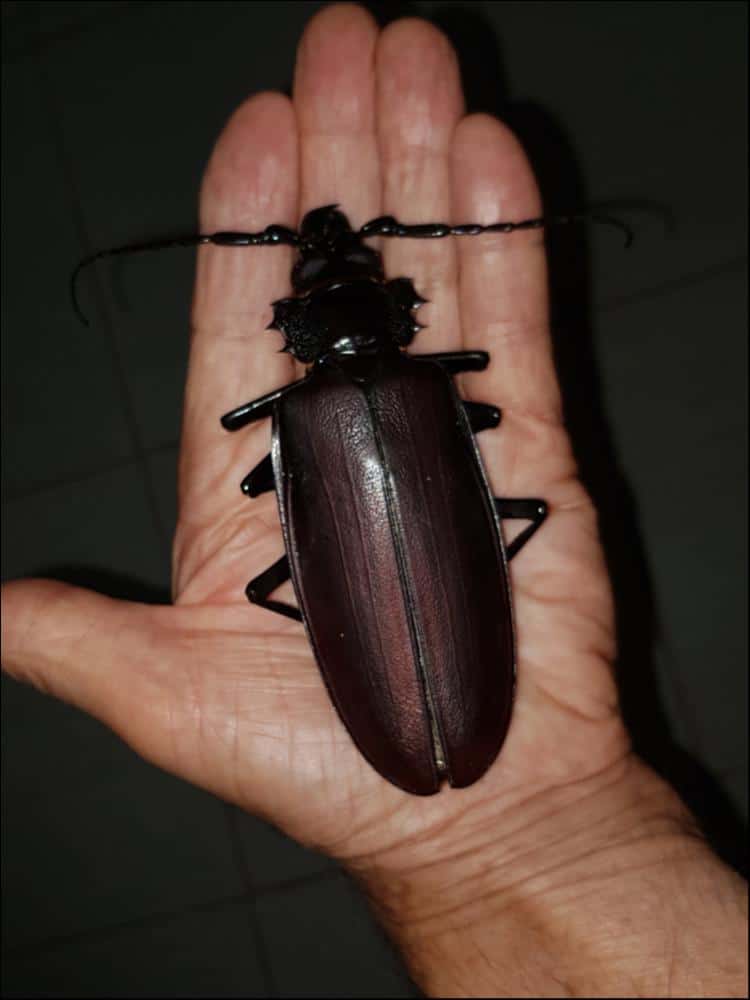
Titan beetles have strong mandibles that can snap a pencil and sharp claws they use for defensive purposes.
©guentermanaus/Shutterstock.com
Make That 11…
While they may not live on land, we don’t want to forget those creatures that make up a “great fish tale!”
The Largest Fish: Whale Shark (Rhincodon typus)
The largest fish in the world is the whale shark. This species can weigh up to 21.5 tons and grow to be 41.5 feet long. The largest one ever weighed 47,000 pounds and was 41.5 feet long. This shark lives in tropical waters above 70 degrees Fahrenheit and frequents coastlines as well as open water. Whale sharks may look intimidating, but they are actually gentle, and many scuba divers and snorkelers seek a glimpse of them on their outings.
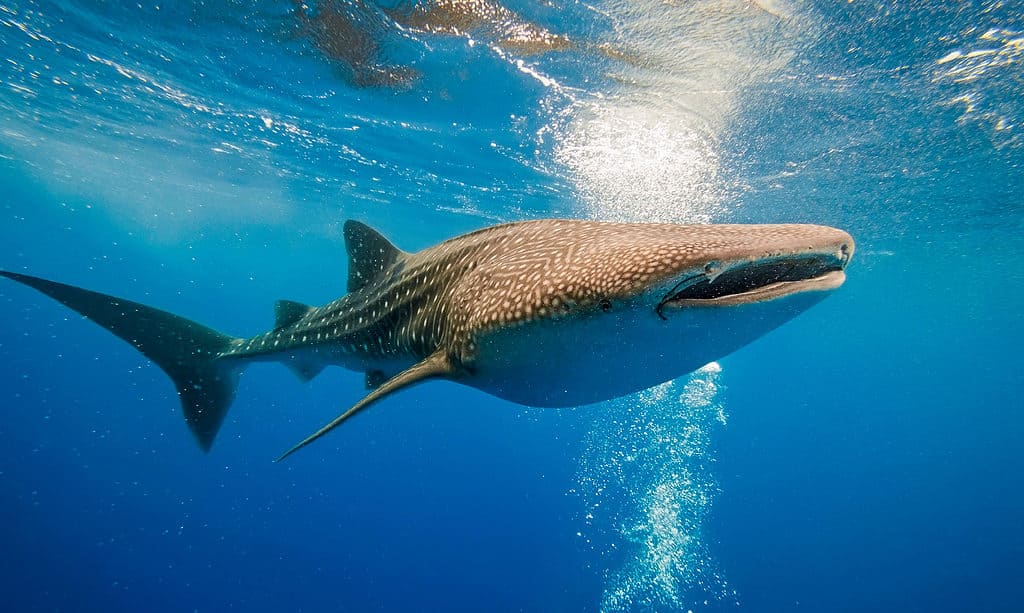
The whale shark is the largest fish in the world.
©Krzysztof Odziomek/Shutterstock.com
Summary of the 11 Largest Animals in the World
| Rank | Animal | Classification |
|---|---|---|
| 1 | Blue Whale | Overall |
| 2 | Ostrich | Bird |
| 3 | Saltwater Crocodile | Reptile |
| 4 | Blue Whale | Mammal |
| 5 | Chinese Giant Salamander | Amphibian |
| 6 | Capybara | Rodent |
| 7 | Giant Anaconda | Snake |
| 8 | Komodo Dragon | Lizard |
| 9 | Japanese Spider Crab | Anthropoid |
| 10 | Titan Beetle | Insect |
| 11 | Whale Shark | Fish |
And What is the Smallest Animal?
It’s the tiny Etruscan shrew! Also known as the white-toothed pygmy shrew or Suncus etruscus, this little cutie inhabits warm and damp areas covered in shrubs for hiding. Most adults of this species range between 35 to 50 millimeters or 1.4 to 2 inches and weigh 1.8 to 3 grams. This tiniest mammal can be found in Europe and North Africa up to Malaysia and on the Mediterranean islands. The Etruscan shrew isn’t as small as the smallest marine animal – but zooplankton isn’t quite as charming.
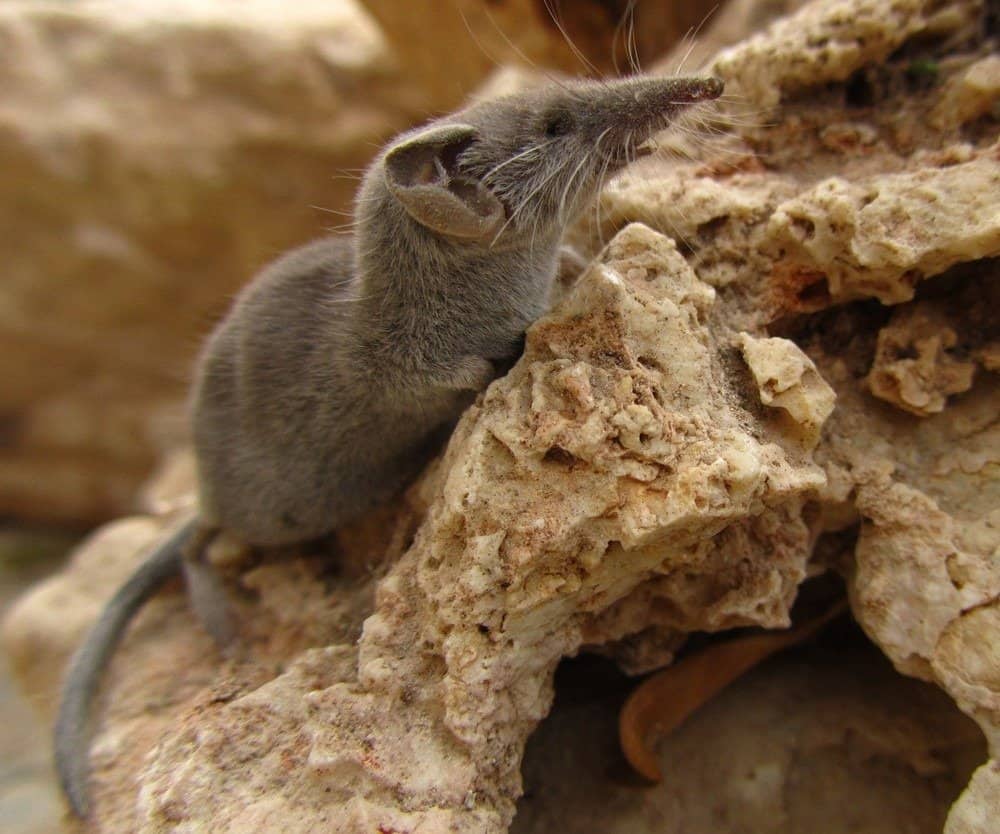
©Wirestock Creators/Shutterstock.com
The photo featured at the top of this post is © Andrew Sutton/Shutterstock.com
FAQs (Frequently Asked Questions)
What are some of the biggest extinct animals?
Believe it or not, but the largest animal ever known to exist is still alive today, that’s the blue whale. Some massive extinct animals include the Megalodon, Dreadnoughtus, Deinosuchus, and Basilosaurus.
Thank you for reading! Have some feedback for us? Contact the AZ Animals editorial team.






